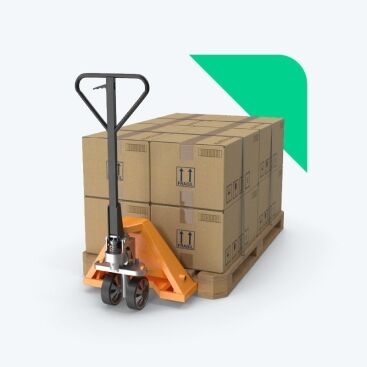80% of warehouses and DCs to automate by 2028
MHE automation is on fire. Modern Materials Handling’s new special report on robotics adoption forecasts 80% of warehouses and DCs will have automation by 2028. By 2030, one-third of all medium to large warehouses will have at least one operational robotics platform.
These striking predictions reveal a fundamental truth: supply chain automation technology is no longer optional—it’s imperative for growth. But here’s the catch—simply adding robots or MHE automation systems isn’t enough.
Concepts like Deposco’s integrations (“Sockets”) provide a hassle free way to add automation and extend the benefits to your warehouse.
To demonstrate why this strategic approach to warehouse technology matters now more than ever, we released a new ebook that dives into the automation landscape. See if your tech stack is flexible enough to support your next investment:
MHE automation can seem overwhelming. This ebook helps you lay the right groundwork and get your strategy right: “Comprehensive Guide to Warehouse Management Maturity and Flexible Solutions”
The strategic shift: from cost center to competitive advantage
Warehouses have evolved beyond just storage facilities. Our ebook shows that over the past decade, warehouse operations have undergone a remarkable shift from a perceived cost center to a strategic differentiator through early adoption of MHE and supported by flexible platforms.
Examples of MHE automation
For those who attended ProMat, you saw plenty of buzz-worthy MHE innovations. From automated trailer loading and unloading equipment that can turn around trucks within a few minutes, versus the usual 30-40 minutes to mobile sortation, to four-way robotic pallets that automatically shuttle, store, and retrieve palletized goods – The efficiency benefits of MHE are endless.
What does this mean for your business?
- Control your own destiny: MHE automation allows you to control your own destiny because matching SKU-level processes to your assortment increases margin on every order, often by 2-4% of revenue. Your ability to adapt to demand spikes directly impacts revenue, and is not dependent on extra headcount. High-speed automation can absorb peak volumes while consolidation keeps slow movers out of the fast lane.
- Save on labor. You have an alternative solution to labor challenges outside of hiring more people. Automation offsets wage inflation and attrition, reducing labor exposure.
Most of all, the warehouse is no longer just an operational concern—it’s a strategic asset that deserves executive attention.
Real questions when evaluating MHE automation…
🤔Have your operations reached that tipping point to warrant it? Have order volume, SKU breadth, or customer SLAs outgrown manual processes?
🤔And have you properly prepared your WMS foundation to realize the true potential of MHE in the warehouse? Does your current system have the ability to deploy robots, ASRS and human workflows as one system?
Answering ‘Yes’ to both questions means it’s time to scope your ability to add MHE.
Our interactive MHE Maturity Assessment to reveal your warehouse complexity score across 10 dimensions. Compare it to industry benchmarks, discover which technologies offer maximum ROI for your operation, and prioritize investments based on your specific challenges.
Getting the most from your MHE automation investment
Despite significant value potential from warehouse technologies like MHE, organizations fail to take the right steps in achieving optimal returns. To ensure rapid maturity and optimal returns, here are several common things your WMS provider should help you avoid:
- Overbuying capabilities: Only implement advanced MHE automation when you are operationally ready for it. This will prevent unused functionality, reduce complexity, and extend your ROI. Your WMS provider should be able to provide your volumes, SLA achievement, and additional KPIs to help you decide what automation is right for you, at the right moment in your journey.
- Underestimating integration needs: Integration among existing warehouse software (ERP, WMS, WCS for example) should be carefully planned out before, during, and after deployment by a WMS partner who knows what success looks like and how to make it fast and simple. Be sure to confirm your integration pricing structure to ensure stable cost profiles.
- Neglecting user experience and culture: Advanced MHE automation requires a solid plan to prevent employees from resisting the technology or developing workarounds. An experienced supply chain partner like Deposco guides this to ensure a smooth experience and change management process.
- Ensuring process readiness: No matter how cutting-edge a new technology may be, it can’t fix poorly designed warehouse workflows. Getting a free, personalized assessment will prevent rework, headaches, and inflated costs.
Understanding these pitfalls is the first step toward avoiding them in your own WMS automation technology journey.
Ready to build a smarter warehouse strategy?
Start with the full picture. Success with MHE automation isn’t about chasing the latest technology. It’s about matching the right solutions to your operational maturity and growth goals. Don’t forget to grab our ebook which shows how to:
- Identify where your operations are today
- Prioritize automation features right-sized to your business
- Build a flexible warehouse foundation that provides a future runway for success
Like what you see? Reach out to us today to schedule a 1:1 Demo!
